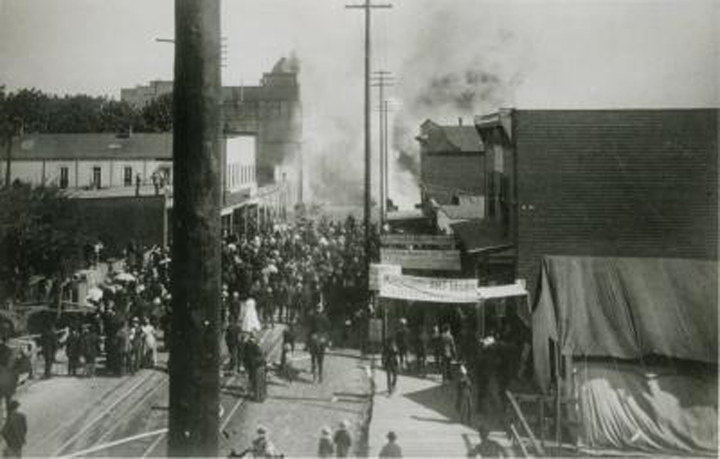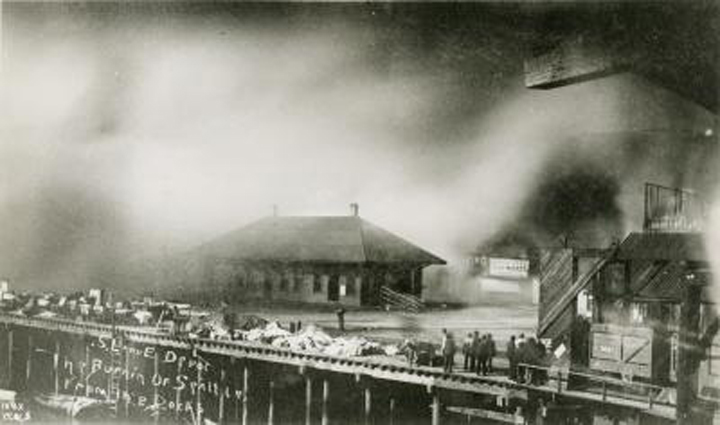
From Digital Archives: photos of 1889 Seattle Fire
When you ask the historical significance of June 6, most people think of the anniversary of D-Day. But June 6 also marks a horrific event in Seattle history.
On that date in 1889, a fire destroyed much of Seattle, which was then a timber town and many years from becoming a world-famous city.
Our Legacy Washington program’s exhibit on the year when Washington reached statehood, “Washington 1889: Blazes, Rails and Year of Statehood,” includes a section on the 1889 Great Seattle Fire, entitled “Sea of Fire.” Part of the section tells how the fire began:
“In mid-afternoon, a glue pot overturned in a woodworking shop downtown. An assistant doused the fire with water. Flames shot across the floor, licking up scattered wood shavings bathed in turpentine. Smoke poured from the building and steam whistles sounded the alarm.
Volunteer firefighters fought thick smoke and scant resources. Private companies managed Seattle’s water supply and the fire hydrants were stationed on alternate streets.
The fire ravaged more than 25 city blocks and burned for 12 hours. In no time, a tent city emerged and eventually, the rebirth of Seattle in brick and stone.”
A view of the fire’s heavy smoke taken near the docks of Seattle.
(Images courtesy Washington State Digital Archives)
The State Digital Archives has several photos showing the fire. The top photo shows a crowd helplessly watching the fire near the corner of First Avenue and Madison. The middle photo offers a view of the fire taken near the docks. The bottom shot features the aftermath two days after the fire.
The photos are found in the State Digital Archives’ State Library Photograph Collection, 1851-1990.
People stand in the aftermath two days after the fire.
The collection consists of more than 5,000 images of various subjects related to Washington’s history, people, geography, and economic development during that period covering nearly 140 years. Subjects include agriculture, Boeing, bridges, canals, Capitol Campus buildings, cities, Civilian Conservation Corps, counties, dams, expositions, fairs, ferries, fishing, forts, ghost towns, historic buildings and houses, historical markers, lakes, libraries, lighthouses, logging, mountains, Native Americans, parks, portraits, railroads, rivers, schools, Statehood, steamboats, totem poles, trees, universities and colleges, and more.

